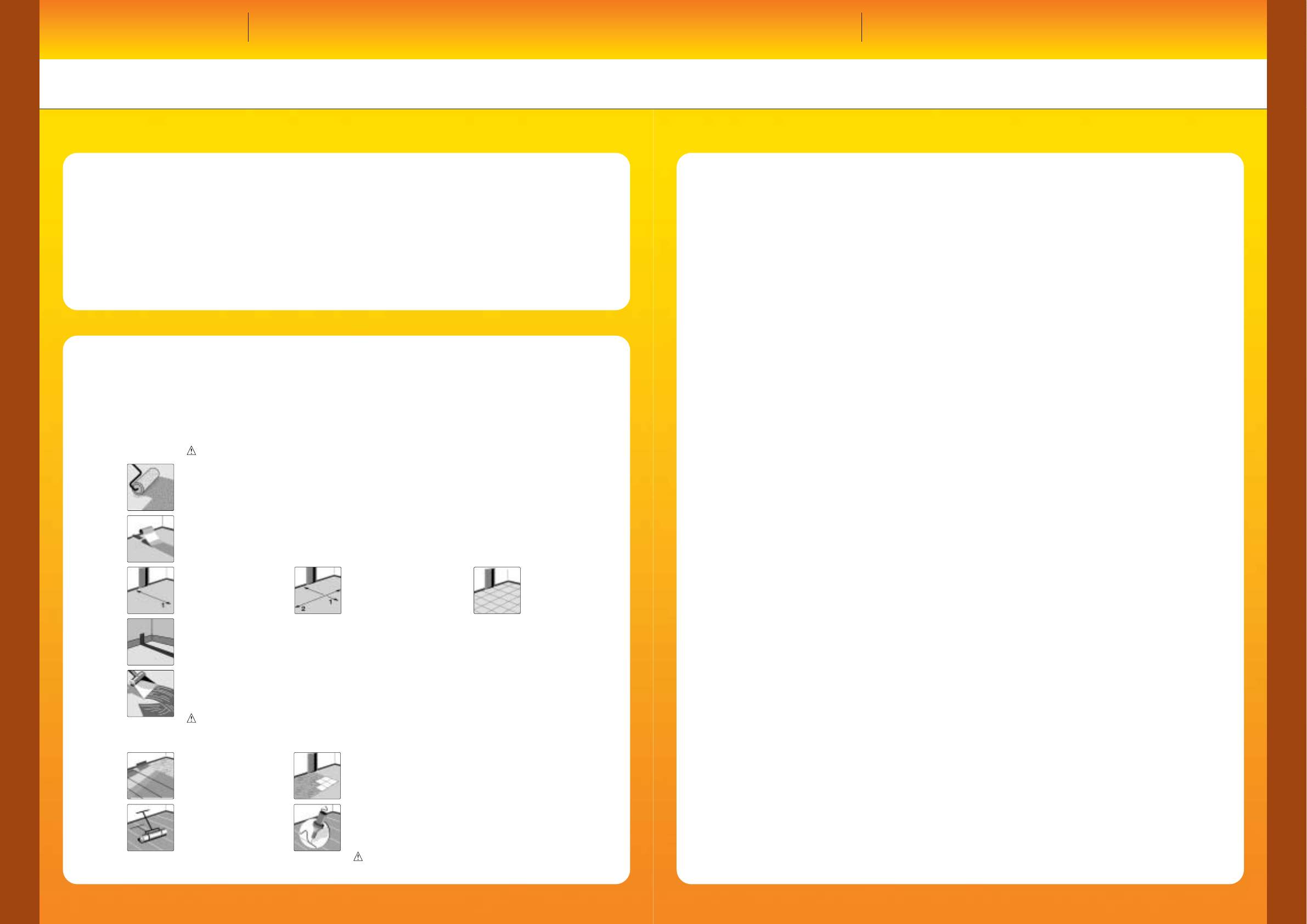
175
174
Technical
guide
LAYING PROCEDURE FOR RESIDENTIAL SHEET PRODUCTS
Check that the subfloor on which you intend to lay the floorcovering is smooth, free from grit, grease and
wood treatments. Most of these floorcoverings should not be laid over damp areas although Texline and
Griptex have higher tolerances for damp. Please refer to the Technical Department for further advice.
The floorcovering should be placed in the room where it is due to be laid for at least 2 hours prior to
laying. The temperature should no less that 18oC.
If you plan to lay two or more widths please ensure sufficient material is purchased to allow for pattern
match.
Sheet lengths should be reversed laid.
Most installations can be safely loose laid whilst ensuring that exposed edges that may be kicked up (such
as doors and joints) are securely adhered to the floor using an 8 to 10cm width application of Gerflor
E120 adhesive. Joints should be treated with Gerflor Cold Weld Liquid SG916 to ensure a strong bond.
We recommend threshold strip to be fitted to doorways.
For permanent installations or where heavy domestic furniture such as washing machines are likely to be
moved around, the floor covering can be fully adhered to the subfloor.
Technical guide
Laying procedure
Antistatic products
Normal laying using high performance acrylic adhesive which has low water content. The flooring
has antistatic properties of its own. These properties do not depend on the laying method used.
Copper strips are not necessary.
Dissipative products and conductive products
There are two laying systems:
• with conductive adhesive and conductive primer,
• on a copper strip grid with a high-performance acrylic adhesive which has low water content.
Copper strips: code 0584
Width: 1 cm Average length: 250 lm
Thickness: 6/100 mm Weight: about 3.6 kg
1. Apply a conductive primer.
The coverage should be 100-150 g/m
2
.
Leave to dry for at least 12 hours.
2.1 Sheets
Lay first length along guide line, ensuring sheets are laid lengthways in the same
direction as the light falls.
3. Use 2 lm of copper strips for every 30 m
2
for earthing.
Connect the copper strip to the earth (1 earth for every 30 m
2
).
For rooms over 30 m
2
, lay copper strips at the periphery of the room and on the
diagonal.
4. Adhering with acrylic single stick conductive adhesive
(type Cégé 100 Conductrice - Akzo-Nobel) and a sharp-serrated notche, or similar
approved adhesive. The coverage should be approximately 200-300 g/m
2
.
In order to achieve a regular and appropriate coverage change the spatula regularly.
Carefully follow the manufacturer's instructions when applying primer and
adhesive. Ensure that the supplier can provide a 10 year guarantee for the
conductibility of the adhesive.
5.1 Lay the sheets.
6. Smooth down
manually then roll
with a 50 kg flooring
roller.
7. Groove and heat weld the joints 24 hours
after installation (compulsory).
Dried adhesive on surface of flooring may be
removed with alcohol or turpantin.
Do not traffic the floorcovering for
48 hours after installation.
The sheets must be unrolled and left in the room to be covered, with the adhesive,
for at least 24 hours prior to laying.
Minimum ambiant temperature must be 15 °C
.
2.2 Tiles
Trace a line
perpendicular to the
main entrance.
Trace a perpendicular
line to this axis
ensuring equal cuts for
tiles on both sides.
5.2 Lay the tiles.
For conductive, dissipative and antistatic floorcoverings For residential sheet products
LAYING PROCEDURE FOR CONDUCTIVE FLOORING
WITH CONDUCTIVE ADHESIVE AND CONDUCTIVE PRIMER
Technical guide
Laying procedure
Technical
guide










